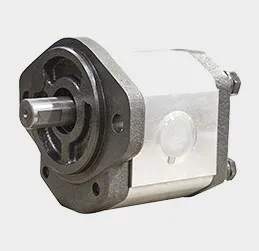precision stamping die
The Importance of Precision Stamping Dies in Modern Manufacturing
In today's fast-paced manufacturing landscape, precision and efficiency are of paramount importance. Among the various techniques employed to achieve these goals, precision stamping has emerged as a vital process. At the heart of this process lies the stamping die—an essential tool that shapes, cuts, and forms materials with exceptional accuracy. This article delves into the significance of precision stamping dies, their applications, design considerations, and advantages in modern manufacturing.
Understanding Precision Stamping Dies
At its core, a stamping die is a specialized tool used in manufacturing processes, particularly in metalworking, to convert flat sheets of metal into specific shapes and designs through the application of force. Precision stamping dies are engineered to achieve high tolerances, producing components that fit seamlessly in assemblies and systems. They are available in various forms, including progressive dies, compound dies, and transfer dies, each designed for different applications and manufacturing requirements.
Applications of Precision Stamping Dies
Precision stamping dies find extensive applications across various industries. In the automotive sector, they are used to manufacture components such as brackets, housings, and control panels with tight tolerances and consistent quality. The electronics industry also relies heavily on precision stamping for producing connectors, housings, and circuit boards. Additionally, sectors such as aerospace, medical devices, and consumer goods utilize precision stamping dies to produce intricate parts that must meet rigorous performance and safety standards.
Design Considerations
The design of precision stamping dies involves several critical factors. Firstly, material selection is crucial, as the die must withstand the stresses of the stamping process without deforming or failing. Common materials used for stamping dies include tool steel, carbide, and sometimes advanced composites for specialized applications.
precision stamping die

Secondly, die layout and configuration must be optimized to ensure efficient material flow and minimize waste. This involves considering the thickness of the metal sheet, the shape of the desired part, and the stamping process itself.
Lastly, the incorporation of features such as guides, clamps, and ejectors aids in achieving consistent results and reduces the likelihood of defects. The precision of the stamping die directly impacts the performance and quality of the final product, making meticulous design paramount.
Advantages of Precision Stamping Dies
The use of precision stamping dies offers several advantages to manufacturers. One of the primary benefits is the ability to produce high volumes of parts quickly and consistently, dramatically reducing production time compared to traditional machining methods. This efficiency is particularly valuable in high-demand sectors where turnaround times are critical.
Moreover, precision stamping ensures a high level of accuracy, resulting in less scrap and rework. When parts are produced with precision dies, they fit better, function more reliably, and meet stringent quality standards. This not only enhances product performance but also leads to cost savings over time.
Another significant advantage is versatility. Stamping dies can be designed to produce complex shapes, allowing manufacturers the flexibility to innovate and create new products without the need for extensive retooling. Additionally, advancements in technologies such as computer-aided design (CAD) and computer-aided manufacturing (CAM) have enabled more precise and efficient die design and manufacturing processes, further enhancing the capabilities of precision stamping.
Conclusion
Precision stamping dies are integral to the success of modern manufacturing, playing a pivotal role in producing high-quality components efficiently and cost-effectively. Their application spans numerous industries, underscoring the versatility and importance of precision in product development. As technology continues to advance, the design and capabilities of precision stamping dies will evolve, allowing manufacturers to push the boundaries of innovation and excellence. In a world where precision is key, investing in high-quality stamping dies is an investment in the future and success of any manufacturing operation.
-
crawler mounted drill rig-Baoding Hairun Machinery And Equipment Trading Co., Ltd.|Underground Drilling Solutions, Confined Space EfficiencyNewsAug.16,2025
-
Custom OEM Couplings | Precision Machining & ManufacturingNewsAug.16,2025
-
Advanced Drilling Solutions for Confined Spaces - Baoding Hairun Machinery | Crawler Mounted Drill Rig&Confined Space ApplicationsNewsAug.16,2025
-
Drill For Confined Spaces-Crawler Drill Rig for Mining Applications|Baoding Hairun Machinery And Equipment Trading Co., Ltd.NewsAug.16,2025
-
Crawler Mounted Drill Rig-Baoding Hairun Machinery And Equipment Trading Co., Ltd.|Compressed Air Power&Frame SupportNewsAug.15,2025
-
Crawler Drilling Rig - Baoding Hairun|Confined Space Drilling&Mine SafetyNewsAug.15,2025















